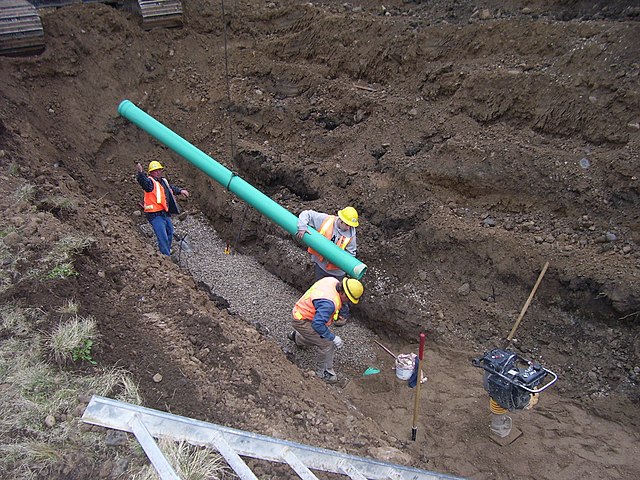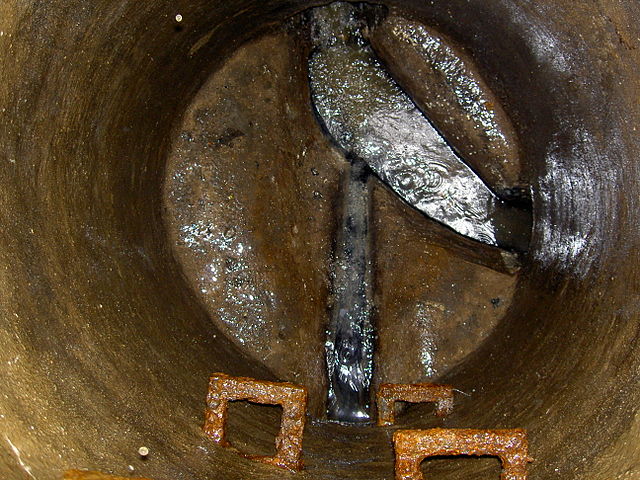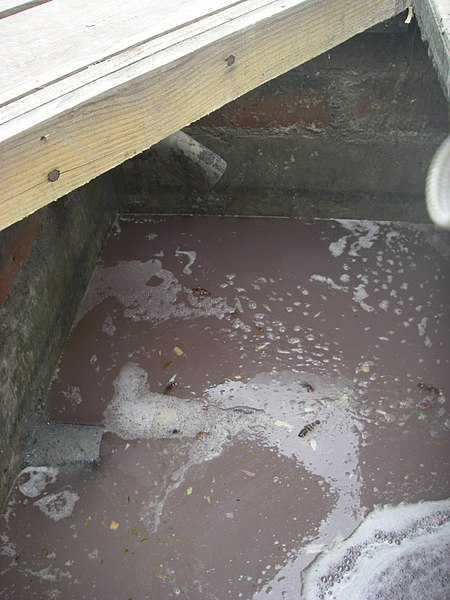A gravity sewer is a conduit utilizing the energy resulting from a difference in elevation to remove unwanted water. The term sewer implies removal of sewage or surface runoff rather than water intended for use; and the term gravity excludes water movement induced through force mains or vacuum sewers. Most sewers are gravity sewers because gravity offers reliable water movement with no energy costs wherever grades are favorable. Gravity sewers may drain to sumps where pumping is required to either force sewage to a distant location or lift sewage to a higher elevation for entry into another gravity sewer, and lift stations are often required to lift sewage into sewage treatment plants. Gravity sewers can be either sanitary sewers, combined sewers, storm sewers or effluent sewers.
Gravity sewer installation illustrating the significant excavation depth often required to maintain a favorable gradient.
Gravity sewer flow as seen looking down into an open sanitary manhole.
Old brick gravity sewers like this one are typically replaced by reinforced concrete.
Sewage is a type of wastewater that is produced by a community of people. It is typically transported through a sewer system. Sewage consists of wastewater discharged from residences and from commercial, institutional and public facilities that exist in the locality. Sub-types of sewage are greywater and blackwater. Sewage also contains soaps and detergents. Food waste may be present from dishwashing, and food quantities may be increased where garbage disposal units are used. In regions where toilet paper is used rather than bidets, that paper is also added to the sewage. Sewage contains macro-pollutants and micro-pollutants, and may also incorporate some municipal solid waste and pollutants from industrial wastewater.
Pumping station lifting sewage to the treatment plant in Bujumbura, Burundi
Greywater (a component of sewage) in a settling tank
Screening of the sewage with bar screens at a sewage treatment plant to remove larger objects in Norton, Zimbabwe
Screening of sewage at a sewage treatment plant in Bujumbura, Burundi







